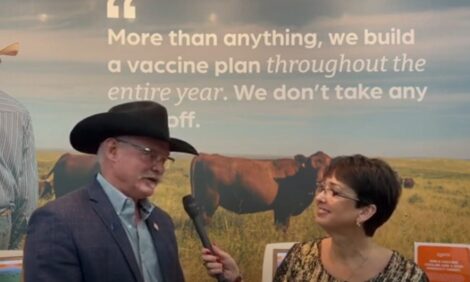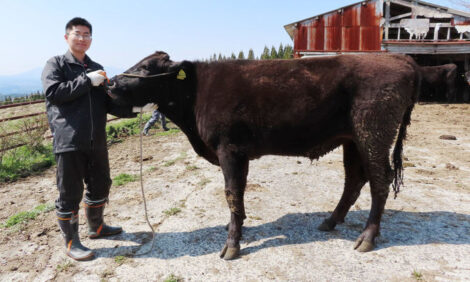



Utilization of Biosolids for Pasture Fertilization
Biosolids are solid, semi-solid, or liquid materials resulting from the treatment of domestic sewage sludge, writes Maria Silveira, Assistant Professor, Range Cattle Research and Education Center, UF/IFAS. This publication is part of the IFAS, 2008 Beef Cattle Short Course Proceedings. To view the entire proceedings please click on the link provided below.
Introduction
The term “biosolids” was introduced by the wastewater treatment industry in the early 1990’s and has been adopted by the United States Environmental Protection Agency (U.S. EPA) to distinguish high quality, treated sewage sludge from raw sewage sludge and from sewage sludge containing large amounts of pollutants.
Raw sewage sludge must be processed to meet U.S. EPA criteria before they may be called biosolids. Unlike other organic materials such as animal manure, biosolids are subjected to strict regulations that control their use and disposal. Physical, chemical, and biological processes are often employed to reduce pathogens levels, odor, and vector attraction of domestic wastewater.
Anaerobic and aerobic digestion, alkaline stabilization, dewatering, composting, and heat-drying are some of the treatments that biosolids may undergo before they can be land applied.
The type and extent of the treatment affect biosolids composition and nutrient availability; thus biosolids should be analyzed prior to application to determine adequate application method and rates.
Types of Biosolids in Florida
The most common biosolids types in Florida are class AA and class B residuals. Class AA biosolids contain negligible concentrations of pathogens and can be used without restriction. Certain class AA biosolids are labeled as fertilizer and marketed to the public.
There are no grazing, harvesting, or public restrictions associated with class AA biosolids. Class B biosolids are treated to reduce pathogens but some pathogens may still remain in the residue. Contrary to class AA, class B materials are subjected to more strict restrictions. For instance, a 30-day restriction on grazing is required when applying class B biosolids to pastures. This allows time for destruction of pathogens which may not have been controlled during the wastewater treatment process. Regardless of the class, pathogens present no danger to grazing animals when biosolids are properly handled and applied.
Both class AA and B materials pose no risks in terms of heavy metal contamination. Extensive research has shown that heavy metal availability and potential toxicity to plants and cattle grazing biosolids-amended pastures are minimal (Lane, 1988; Tiffany et al., 2000a,b; Gaskin, et al., 2003). Although heavy metals represented a serious concern 20 to 30 years ago, biosolids currently produced and marketed in Florida contain very low concentrations of heavy metals and are seldom a cause for concern. Table 1 indicates the maximum concentrations of heavy metals permitted for land application of biosolids.
Land Application of Biosolids to Agricultural Lands
Land application of biosolids is an environmentally sound management practice for disposal and recycling of wastewater residuals. Florida produces approximately 300,000 dry tons of biosolids per year and imports another 100,000 dry tons from other states; 66% of the total is used in land application (primarily class B residuals), while 17% is placed in landfills, and the remaining 17% is sold to consumers for use in home gardening (FLDEP, http://www.dep.state.fl.us/water/wastewater/dom/ reshome.htm). Besides the agronomic benefits, land application of biosolids is a cost effective method for waste disposal. The cost associated with land application of biosolids ranges from $50 to $200 per dry ton, compared to $175 to $650 per ton for landfill disposal (Obreza, 2006, personal communication).
Biosolids contain essential plant nutrients (i.e., nitrogen, phosphorus, sulfur, and micronutrients) and organic matter that can improve crop production. Soil chemical, physical, and biological properties are also improved after biosolids application. Nutrients in biosolids are usually not readily available to the plants and are released slower than commercial fertilizers, which may improve nutrient uptake efficiency and, consequently, reduce risks associated with nutrient losses.
| Table 1. Maximum concentrations of metals in biosolids (U.S. EPA 1993).1 | ||
| Maximum concentration (mg..kg-1)† | ||
|---|---|---|
| Pollutant | Class B | Class AA |
| Arsenic (As) | 75 | 41 |
| Cadmium (Cd) | 85 | 39 |
| Copper (Cu) | 4,300 | 1,500 |
| Lead (Pb) | 840 | 300 |
| Mercury (Hg) | 57 | 17 |
| Molybdenum (Mo) | 75 | --- |
| Nickel (Ni) | 420 | 420 |
| Selenium (Se) | 100 | 36 |
| Zinc (Zn) | 7,500 | 2,800 |
| 1U.S. EPA. 1993. 40 CFR Part 503- Standards for the use and disposal of sewage sludge: Final rule. Fed. Regist. 58:9248-9415. †Dry weight basis. |
||
The agronomic benefits of biosolids application to Florida agricultural lands have been extensively demonstrated in the scientific literature (Adeji and Rechcigl, 2002; Tiffany et al., 2002; Sigua et al., 2005; O’Connor et al., 2005). The majority of the biosolids recycled in Florida are currently applied to beef cattle pastures. When properly applied, biosolids are safe to forages and animals. Producers can benefit from biosolids application by reducing fertilizer costs. Another advantage of biosolids is that, because of the alkaline nature of some of these materials (i.e., limestabilized biosolids), they can increase soil pH and reduce costs associated with liming. However, caution should be exercised when making repeated applications of biosolids to avoid excessively high soil pH. It is critical to closely monitor pH after biosolids application by testing the soil regularly (at least every 3 years).
Application Rates
Biosolids are typically applied to pastures at rates that meet nitrogen (N) needs of the forage. However, because biosolids typically exhibit unbalanced nitrogen to phosphorus (P) ratio compared to the crop nutrient requirements, improper biosolids application may lead to excessive P accumulation in the soil. Current Florida legislation requires that biosolids be applied based on crop P requirements in sensitive watersheds. This approach significantly limits the rates that biosolids can be recycled in Florida and, in many cases, obliges municipalities to dispose biosolids in landfills. When biosolids are applied at P-based rates, additional N fertilization is required to supply enough N to meet the forage needs, which may increase production costs. Application rates based on forage P requirements may be so low that they are often impractical. Despite the fact that certain biosolids contain very low concentrations of available P due to the treatment process (i.e., heat dried, Al-enriched materials) from a regulatory perspective all biosolids types are treated similarly. This is in part due to the fact biosolids are regulated based on their total concentration of N and P. Because only a small percentage of the N and P present in the biosolids may be plant available, total concentration is often a poor indicator of nutrient availability.
To determine the appropriate application rate, it is important to consider biosolids composition, decomposition (mineralization) rates, forage nutrient needs, and regulations limiting P application. Despite the heterogeneity associated with biosolids, it is important to determine the characteristics of the material that will be land applied. Soil testing should be used to monitor changes in soil fertility resulting from biosolids application.
Further Reading
| - | You can view a list of the conference proceedings by clicking here. |
October 2008


